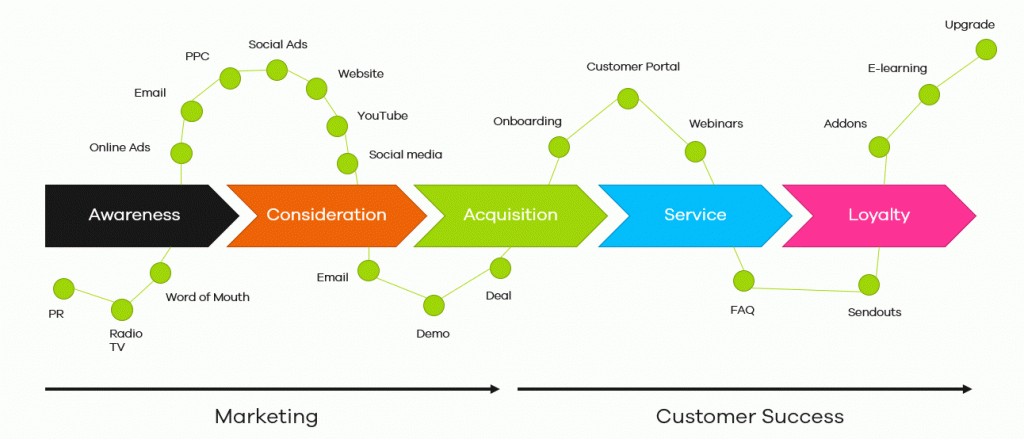How to: Declutter Your Digital Space

Let’s be honest, having a totally cleaned out inbox or a completely crossed off to-do list is one of life’s great joys. Clean digital workspace can help your focus and productivity. So what can you do to declutter your digital space?
- Put in a gap. Cal Newport, a computer science professor at Georgetown University, said many people succumb to what he calls the list/reactive method: They instantly react to communication. That means answering texts, emails, messages as soon as they pop up and therefore constantly interrupting their workflow. Waiting to answer messages until a time that’s more convenient for you can help you stay focused and actually make progress on your work.
- Set a schedule. Set aside time to focus on work communications and then let your colleagues know when that is. Sticking to “office hours” can be surprisingly helpful.. Going from a Zoom video to a call with your kid’s school to texting about social plans with friends can blur the lines between personal and professional. Dr. Newport says, “It blends together the lives completely, You’re never not working. You always feel behind.”
- Take control of your inbox. If you have to delete tons of promotional emails everyday, the consider unsubscribing. Having less to go through everyday will save you time and help you feel like you’ve accomplished something at the start of your day!
- Streamline your workflow. If you are collaborating with a team, emails threads can get long and if you have multiple streaks of communication, it can get confusing. Having a streamlined and structured process “substantially reduces the number of simultaneous, asynchronous back and forth conversations happening,” Dr. Newport said.
What ways have you found to declutter your digital workspace?
What’s Your Customer Journey?

In 2020 we have lost many personal or face to face connections with customers. Therefore, digital marketing has to feel more personal. How? Focusing on your customer’s journey is the first step.
What is a customer journey? The customer journey is the order of all of your customers interactions and experiences with your company and brand. It is often illustrated in map form.
How can you build a customer journey?
Step one, who are your current customers? Analyze your first party data. What does your average customer “look” like? What is their age, gender, occupation? Do they have any specific interests or hobbies?
Step two, who are your potentials? Once you know who your average customer is you can build a look-a-like report to gain more prospects. (What is a look-a-like report? Get more information here.)
Step three, map their journey. How do they first hear about your brand? What are going to be their first interactions? What happens before they buy something? What happens after?
Here’s how that could be illustrated:

Blast marketing campaigns aren’t nearly as effective as they used to be. Building a campaign based on your customer’s journey can greatly increase your conversions and long-time customer loyalty. (One study found conversions were boosted over 300%!)
How can you use customer journeys?
How to Increase Your Adaptability

If this year has taught us anything it’s that being to react well to inevitability of change is a must-have trait. In venture investor Natalie Fratto’s TED Talk on adaptability, she focused on how we can work on a becoming more adaptable in the workplace.
Here are her three suggestions:
- Be proactive. Fratto says,“Adaptability has to be proactive, not reactive. We have to seek it out, exercise it and flex it like a muscle.” How can you seek out adaptability? Start by looking for gaps in your organization that need filled. For example, is your team having a hard time communicating with the podcast team? Take the opportunity to learn about podcasts and help bridge the communication gap. Putting yourself in a position to help can make it easier to adapt to new roles later.
- Look at things from another point of view. Being agreeable can actually be the opposite of adaptability. Occasionally (and respectfully) playing the devil’s advocate can help you and your team see things from a different viewpoint. This can prevent you from getting to attached to your opinions or view. Not being stuck to ideas promotes flexibility and creativity.
- Remember the times you changed your mind. “It’s helpful to write down the times where you were wrong, changed your mind, or made mistakes,” says Fratto. Instead of viewing the times you’ve made mistakes as negatives, view them in a more positive light. Focus on what you learned and how you were able to grow.
What ways have you had to adapt this year?
Can You Trust Your Data?

No matter how good the machine you build it is, it’s not going to run well if your fuel is poor quality. Data is the fuel the runs all marketing. The problem is, data error is commonplace. Data providers are all trying to give their clients the best data possible but often the data they are providing doesn’t match up.
Harvard Business Review did a study in May 2020 to test the accuracy of consumer data. They found that the accuracy of Demographic data was particularly disappointing. Most were only around 50% accurate. For example, the average accuracy of gender segments classifying males was only 42.5%.
“Half the money I spend on
– department-store magnate John Wanamaker (1838-1922)
advertising is wasted; the trouble is,
I don’t know which half.”

What do those errors mean for your campaign? A study by Forrester Consulting on behalf of Marketing Evolution in fall 2019 found that “marketers estimate that 21 cents of every media dollar spent by their organization in the last year was wasted due to poor data quality, which translates to a $1.2 million and $16.5 million average annual loss for mid-size and enterprise organizations, respectively.”
How do a few errors on a record level equal so much wasted money? Record level data is the spring from which everything else flows. For a small example, if a few records in your CRM have mistakes in them, what is going to happen when you use them to send an email campaign? The opens and clicks from your email campaign may inform your audience for your social campaign. In every step and trigger along your campaign, the small errors effect more and more information downstream.
The company Truth Set is looking to minimize error across all data. How? By providing a third – party consumer report type service for data providers and marketers. Truth Set goes through every record available and assigns a percentage rating to all the attributes, such as ‘percentage that this record is actually male.’ That way, marketers won’t waste money on inaccurate data and data providers can keep their data clean.

The hope is that as more time goes on, third party quality checks and ratings will become commonplace and shrink margin for error unilaterally.
What can you do make sure your data is accurate? There are a few easy identifiers you can check for. How old is the data? How transparent is the provider with where the data came from? How consistent and relevant is it?
What changes do you think would make it easier for marketers to trust their data?
